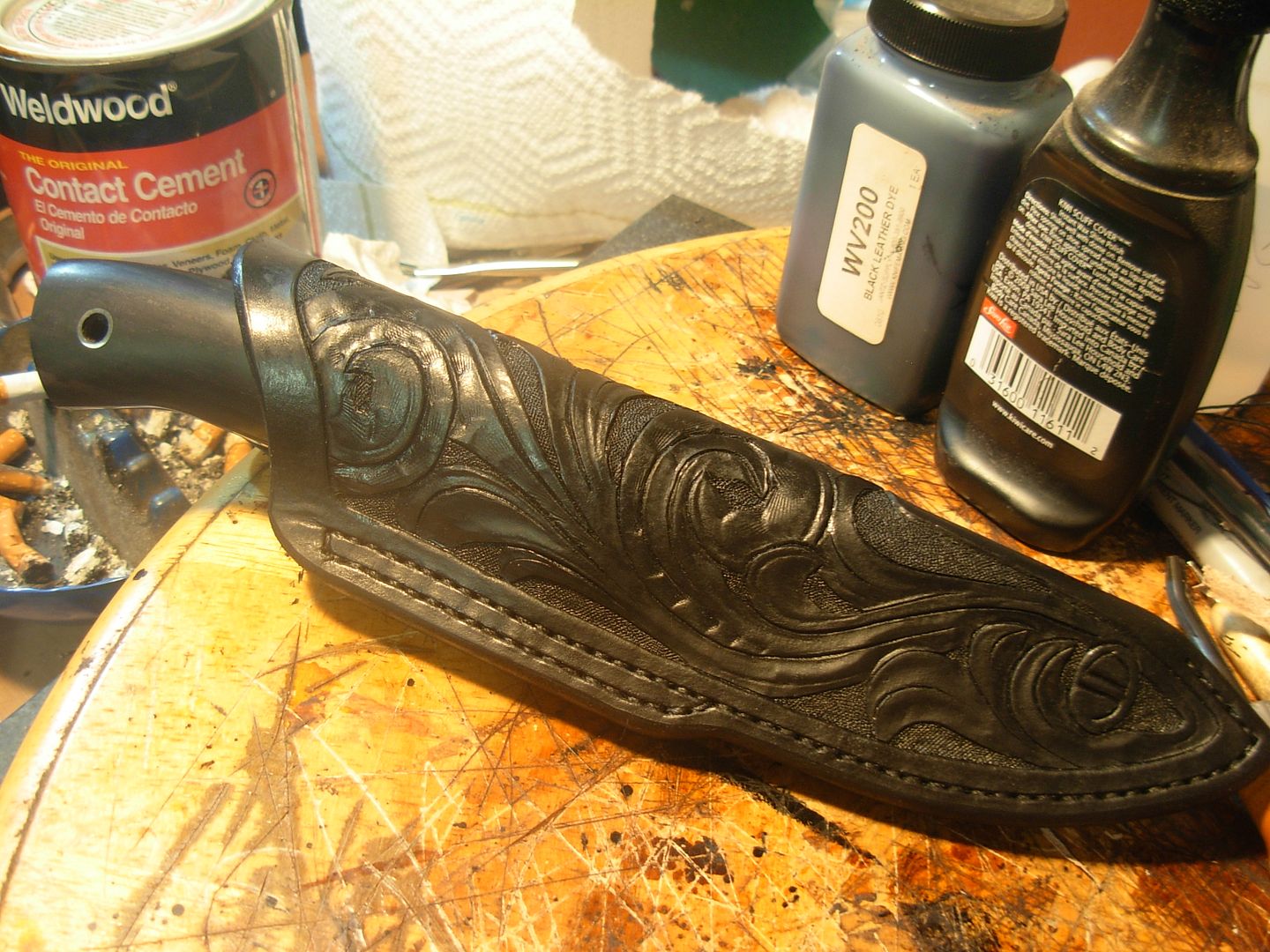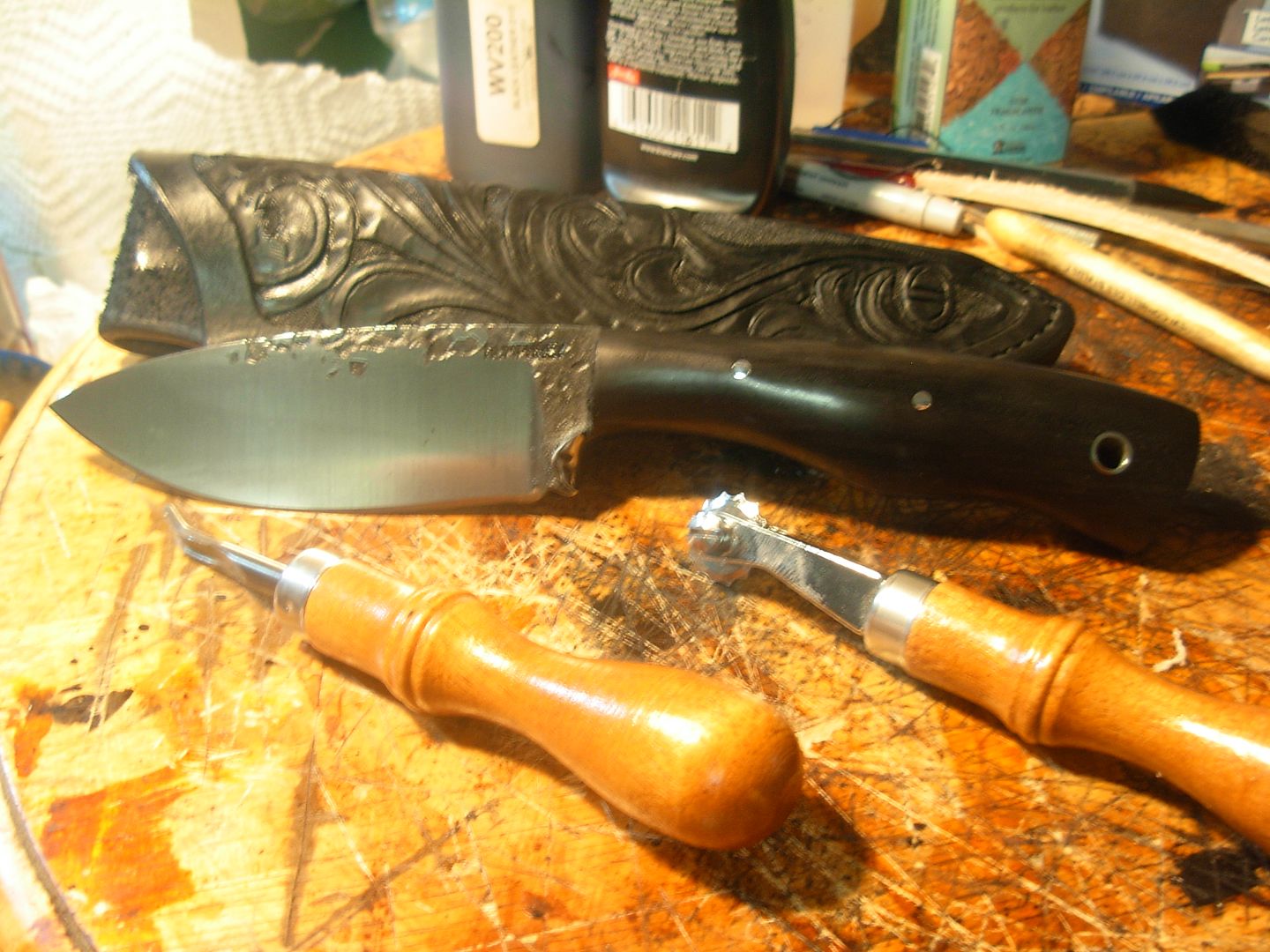Josh Dabney
Moderator
It's been about forever since I've made a sheath so please forgive if I'm a bit rusty 
This sheath is a pretty basic 2 piece butterfly style pouch sheath. Only the body & Belt loop and the welt. The sheath is going to be carved in a Sheridan inspired floral pattern that is HEAVILY influenced by my friend Sandy Morrisey's work.
I always draw my work out first and go from there. So here we've got my original drawing, a pattern of my cut lines made on tracing paper, my sheath body in some 10 oz. leather, and my original file folder pattern.
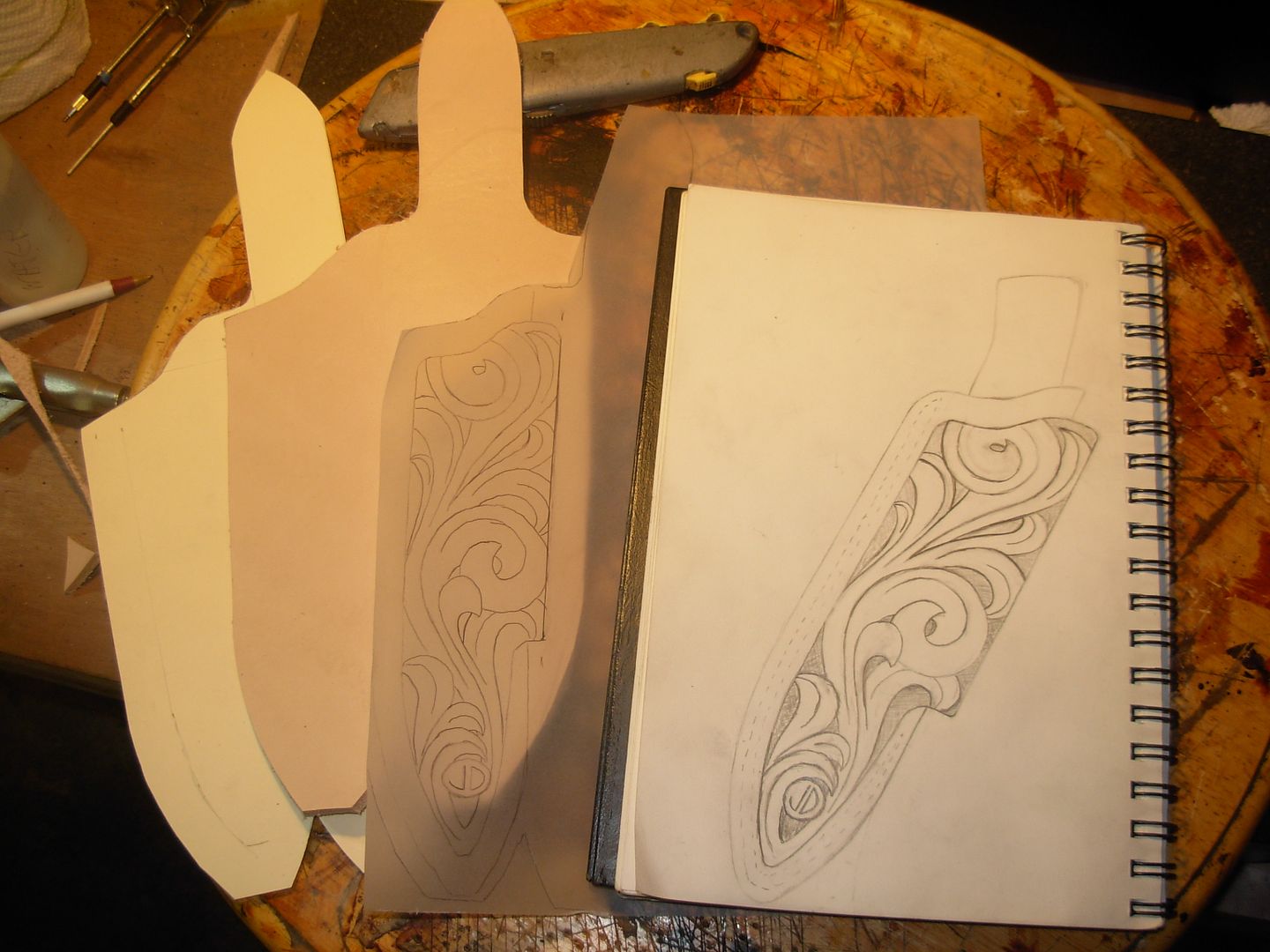
I first need to case my leather to soften it up for the pattern transfer. I don't use too much water to case the leather and just spritz the leather with plain old tap water. I snapped this pic just to show that I spritz it until get some water remaining on the surface and let that soak in but each time I spritz I wet the entire piece as evenly as possible. After wetting the piece leave it dry until it returns to looking it's natural color.

While I waited for my leather to case I whipped up this little homemade bevelling stamp. The craftool beveller is rather large for the interior of the carving so something smaller was in order. Nothing fancy, just a 1/4 Stainless bolt from the hardware store and a few minutes at the grinder.
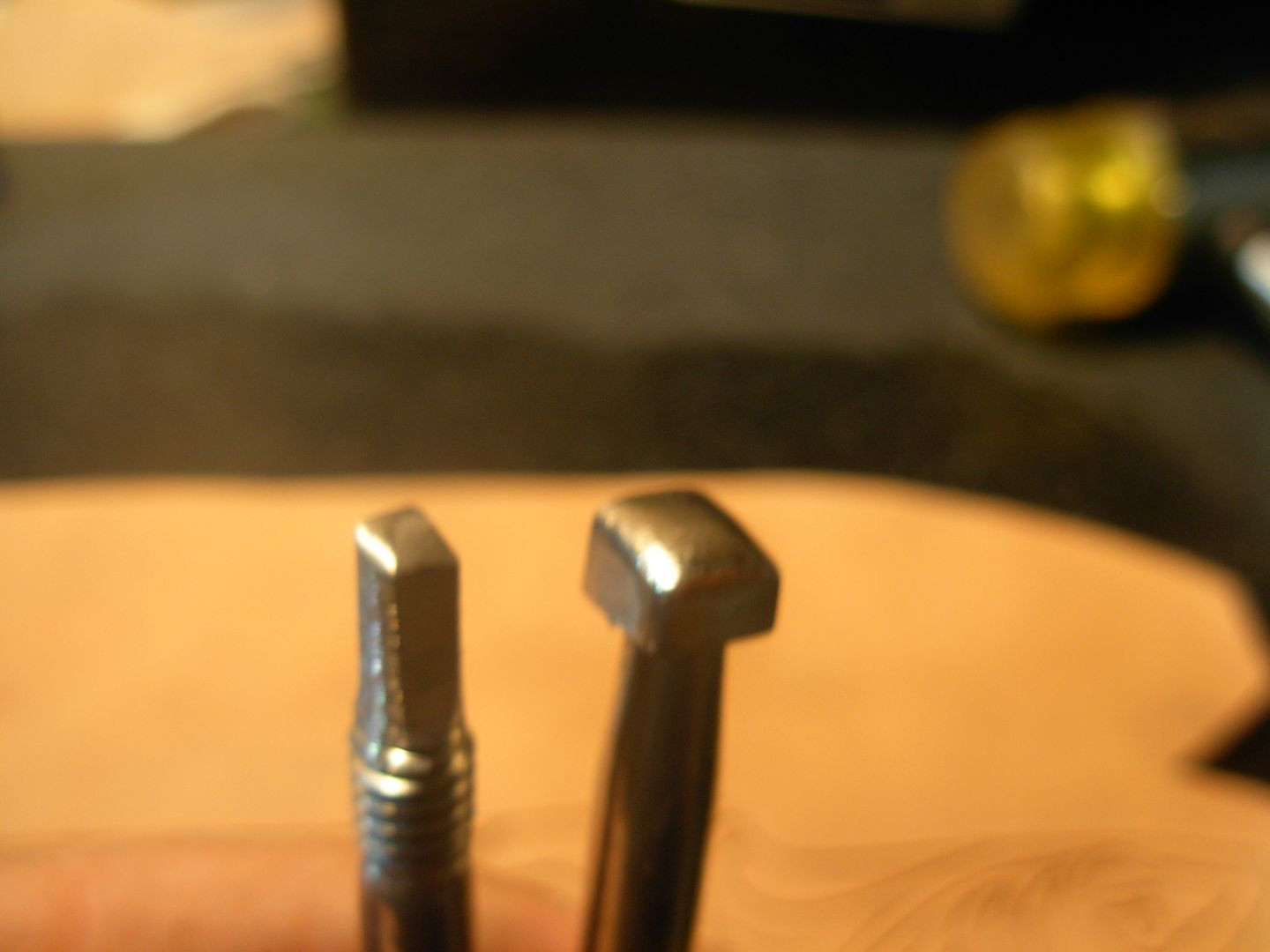
The other thing I needed to do since I haven't used my leather tools in so long is sharpen my swivel knife blade to ensure a clean cut. Just sharpen it up on a 1200 grit diamond stone and we're good to go.
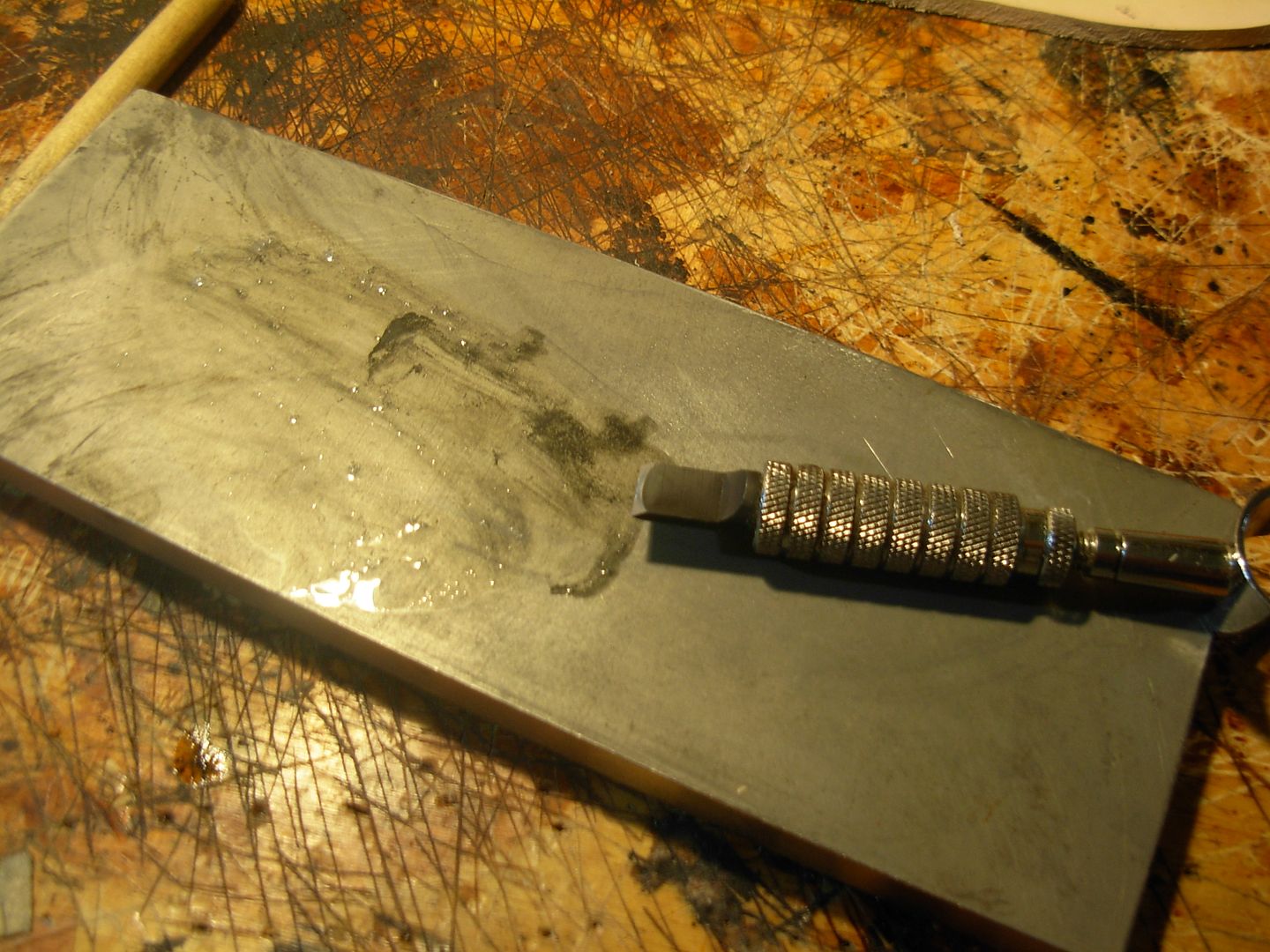
Of course it's a good idea to grab a piece of scrap and lay a cut with the swivel knife and give the new beveller a test run. Should do the trick I think.

Now I'm ready to transfer my carving pattern to me cased leather. Line up my tracing paper pattern on my leather and trace all the lines lightly with this ball point stylus. I picked this tool up at JoAnn Fabrics a few years back and use it alot while working leather
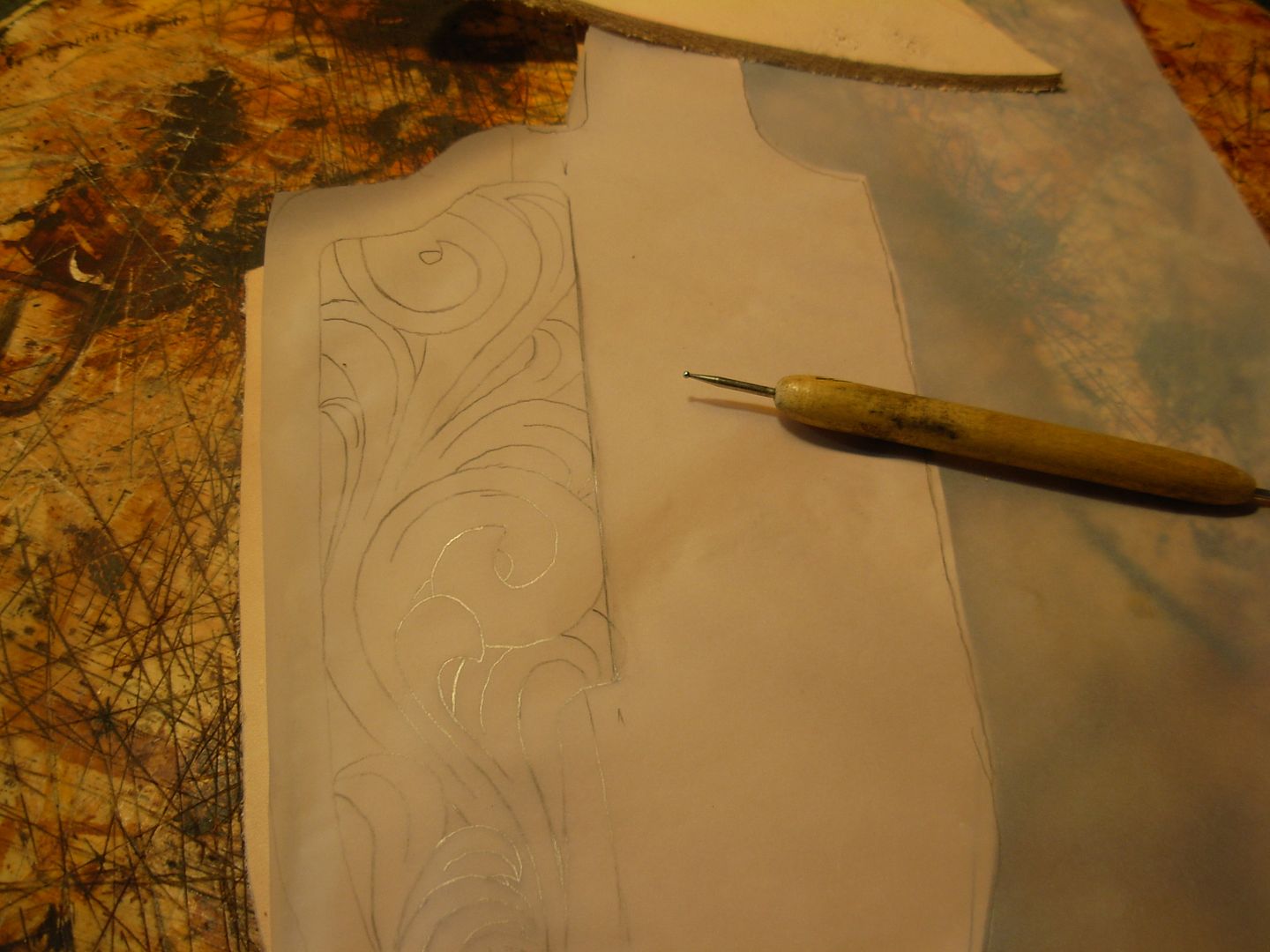
Here's the pattern tranferred and ready for the swivel knife
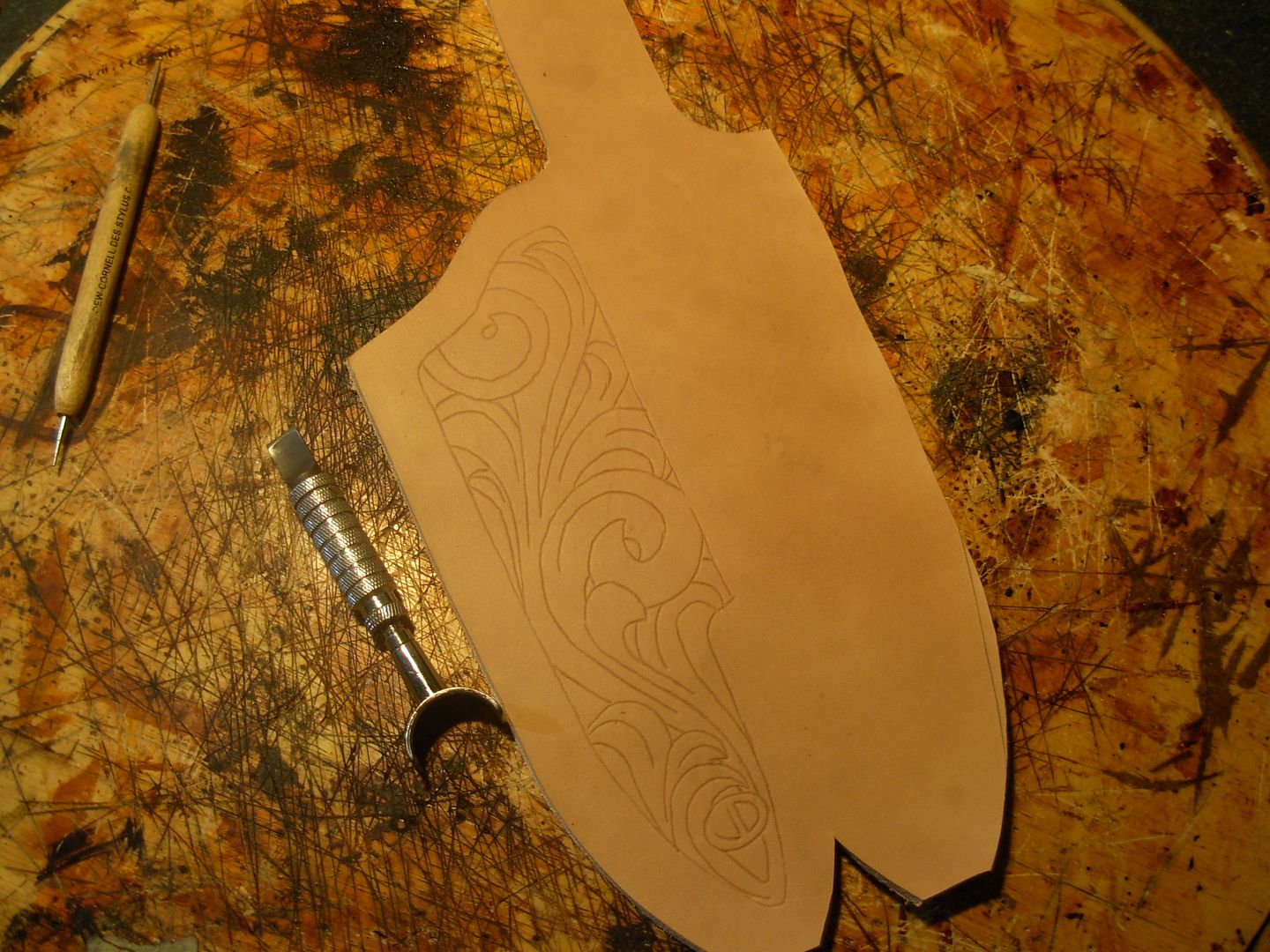
I always start by cutting the outside boarder first

With the boarder cut I start at one side and work my across cutting the longest main lines first, then the shorter cuts that join the first ones, then finish with the accent cuts in the middle of the leaves
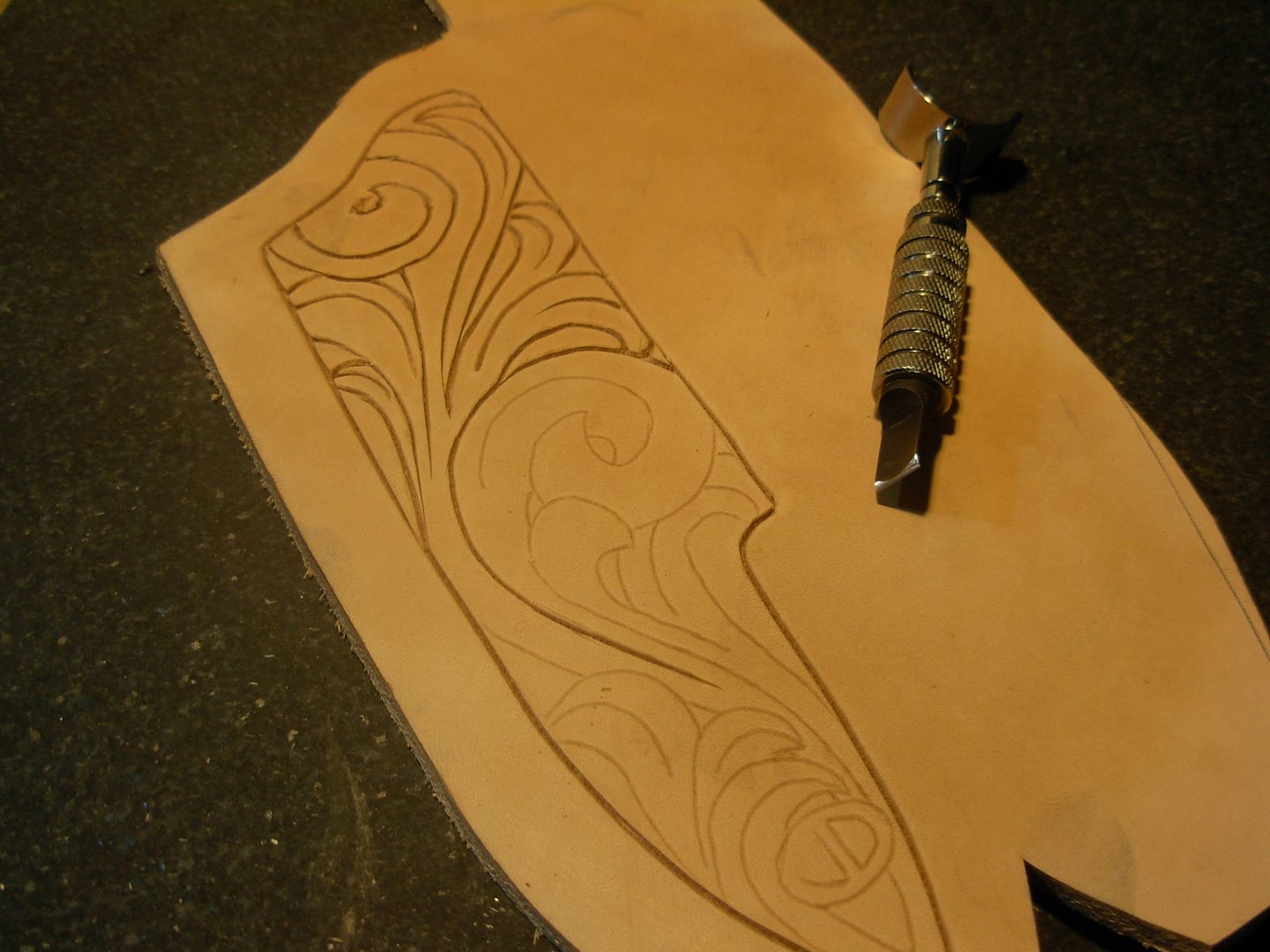
Take your time with the swivel knife and stick to the pattern as best you can

Finished cutting and ready to begin stamping. Starting out with the Craftool beveller to stamp the entire outside boarder to define my carved area from the main sheath body surrounding it
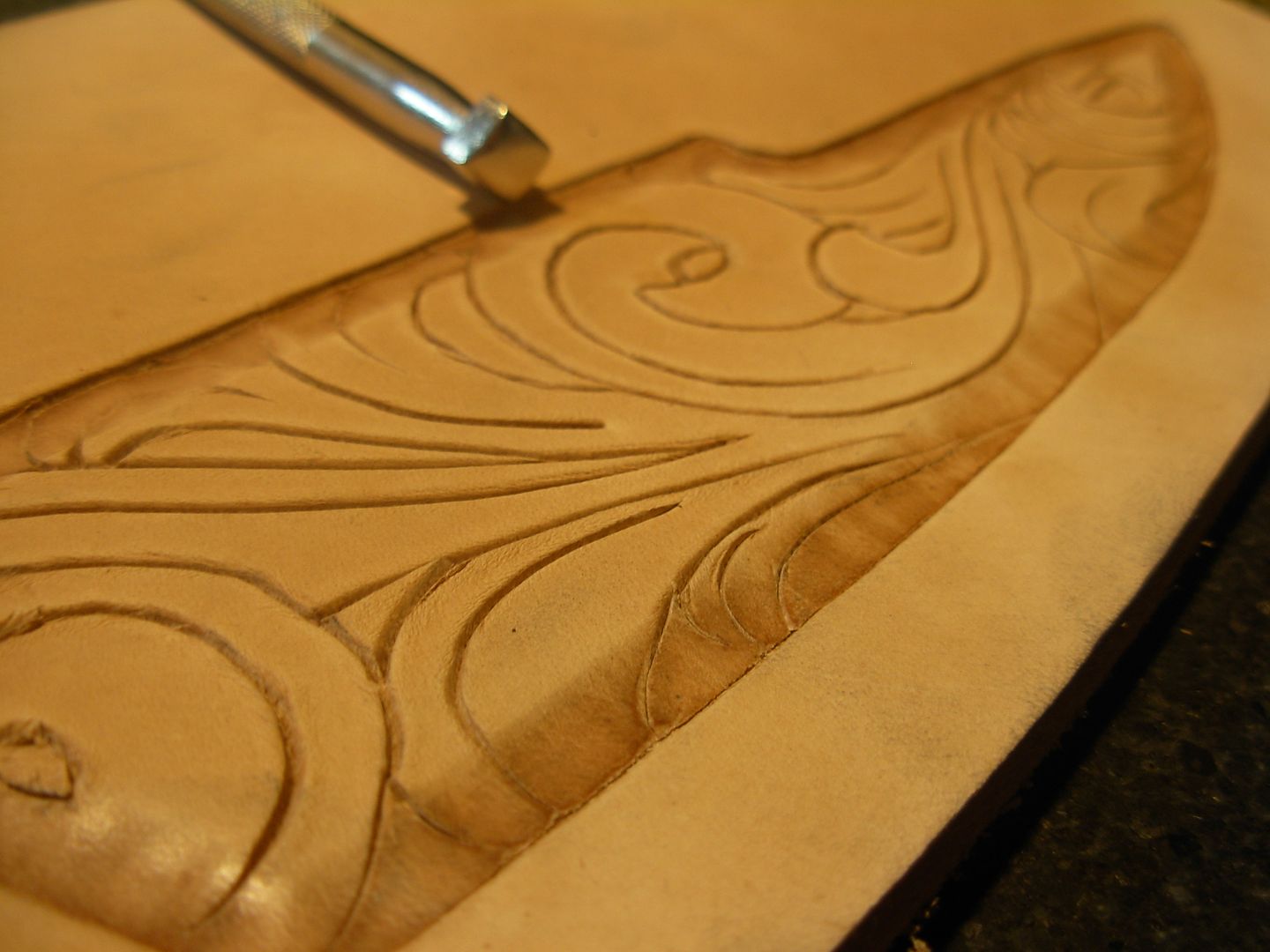
Then move on to the interior of the carving with my small beveller to stamp down the boarders of my backround areas which will define the carving and bring the floral aspects "forward"
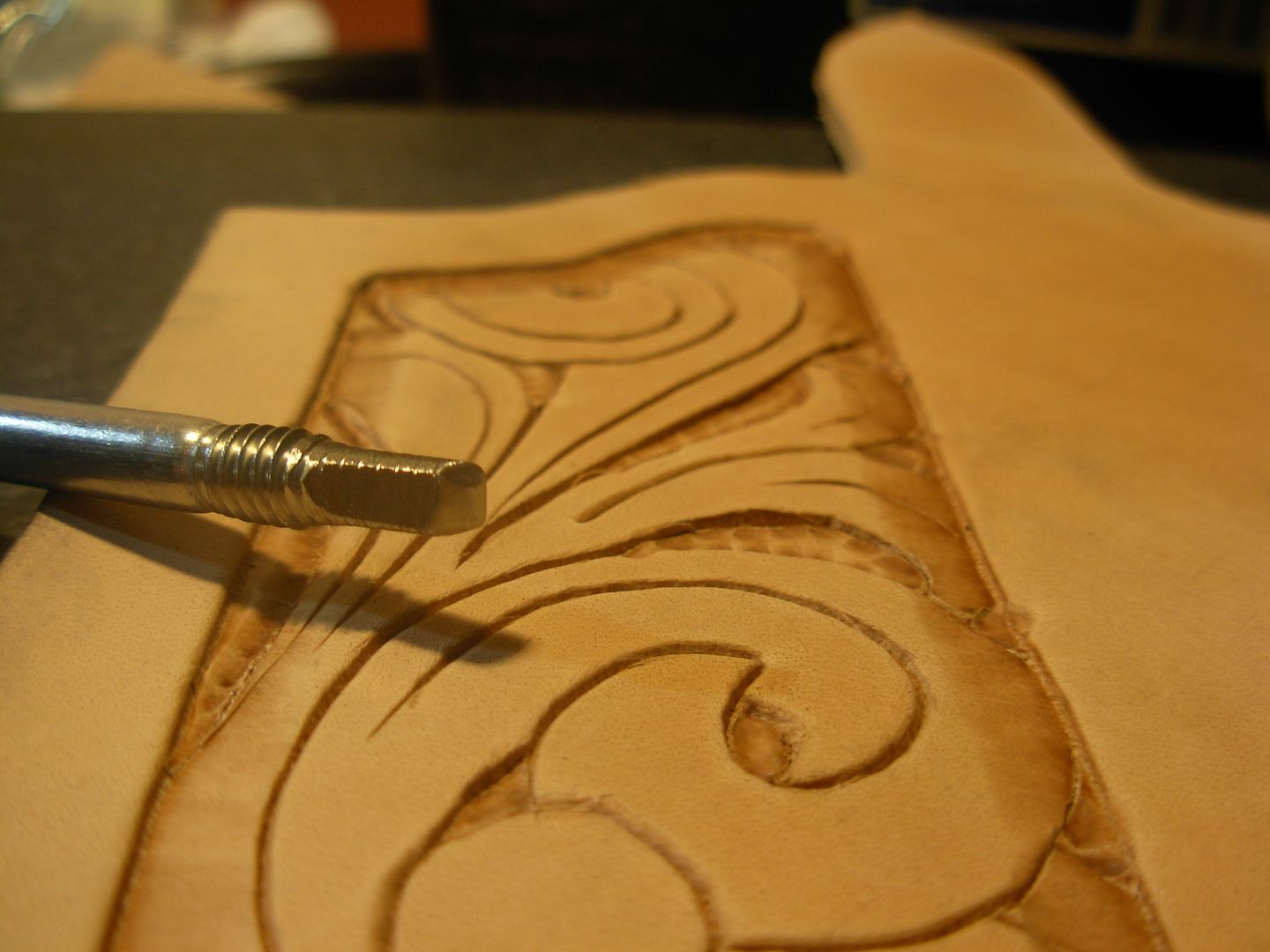
Bevelling done I move on with my tiny backrounding tool to really get the backround stamped down, even, and textured.
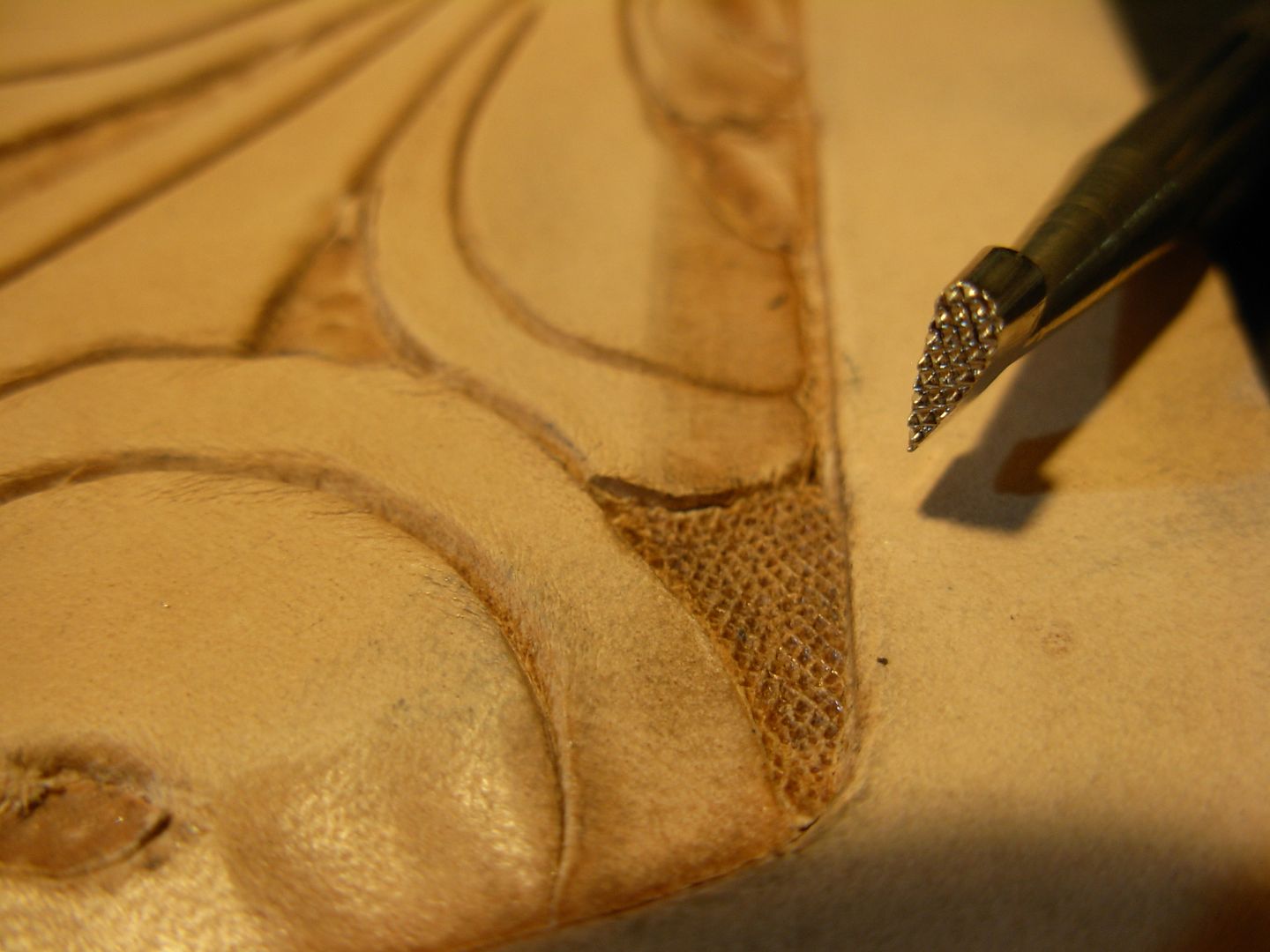
Done with the backround.
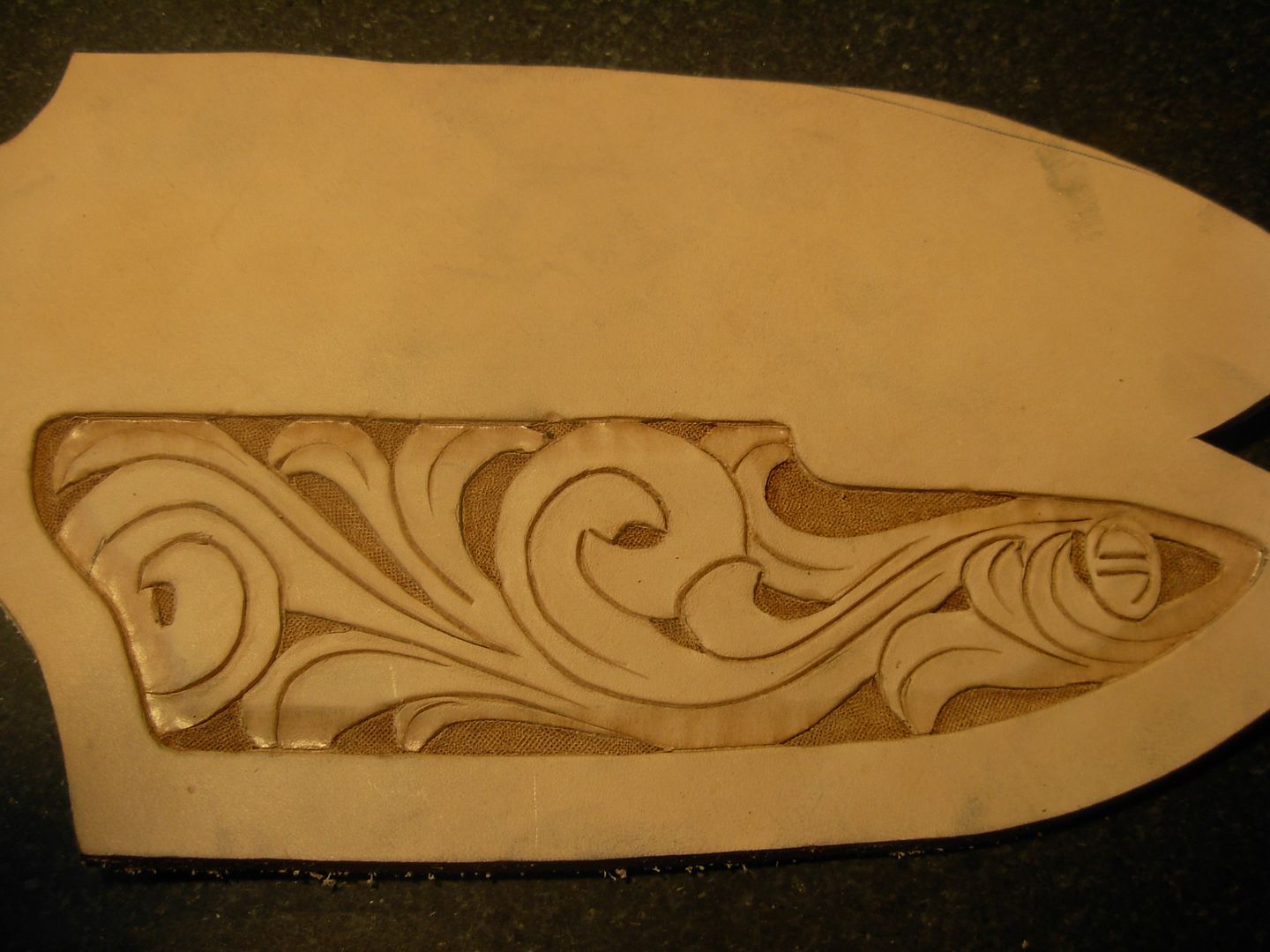
Now back to the craftool beveller to take my 2-D floral carving into 3-D by adding depth stamping down the furthest parts of the design to bring the closest parts into the foreground
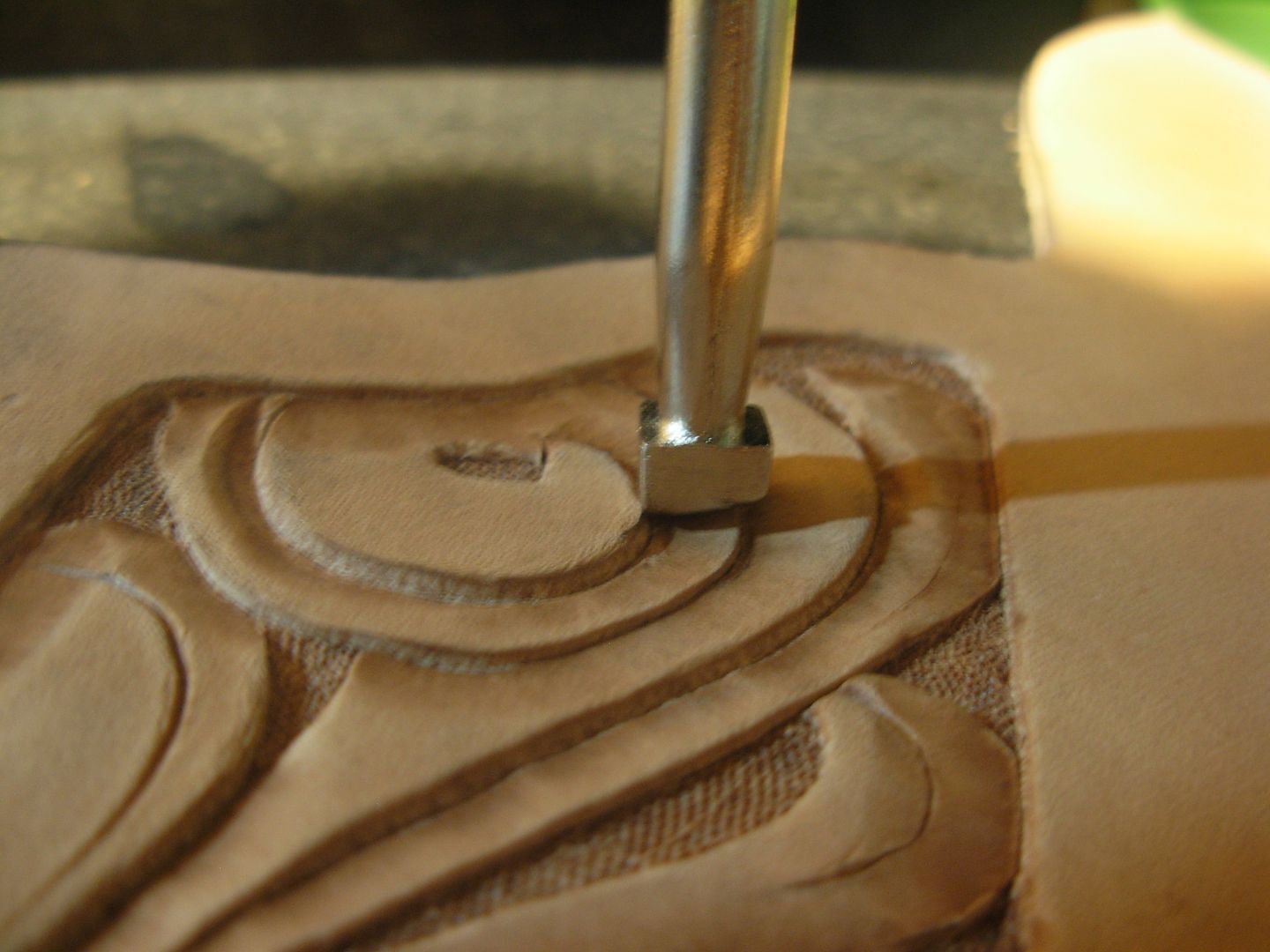
Here's a couple pics of where I currently stand with my carving

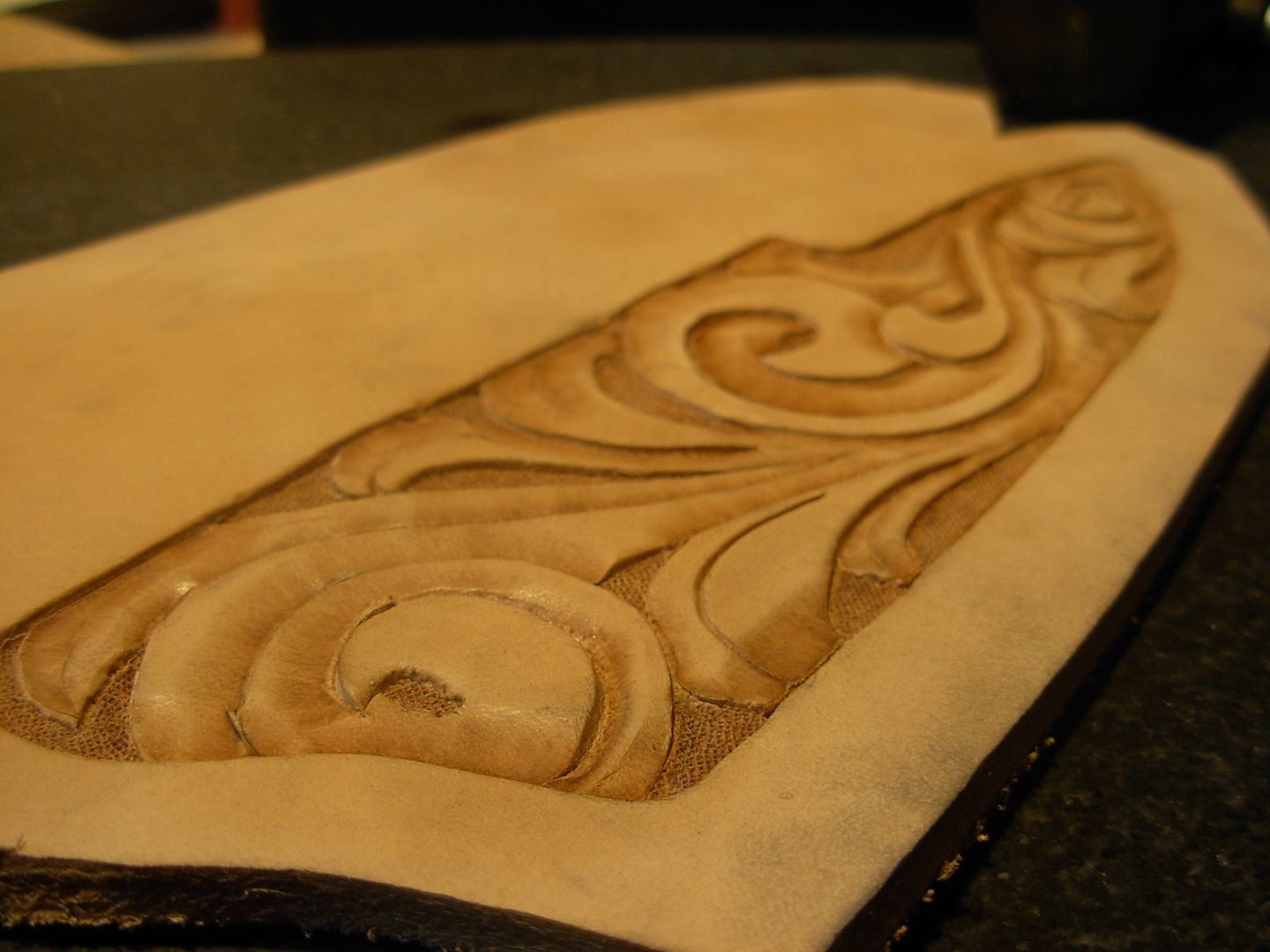
Should finish the carving up tonight
-Josh
This sheath is a pretty basic 2 piece butterfly style pouch sheath. Only the body & Belt loop and the welt. The sheath is going to be carved in a Sheridan inspired floral pattern that is HEAVILY influenced by my friend Sandy Morrisey's work.
I always draw my work out first and go from there. So here we've got my original drawing, a pattern of my cut lines made on tracing paper, my sheath body in some 10 oz. leather, and my original file folder pattern.

I first need to case my leather to soften it up for the pattern transfer. I don't use too much water to case the leather and just spritz the leather with plain old tap water. I snapped this pic just to show that I spritz it until get some water remaining on the surface and let that soak in but each time I spritz I wet the entire piece as evenly as possible. After wetting the piece leave it dry until it returns to looking it's natural color.

While I waited for my leather to case I whipped up this little homemade bevelling stamp. The craftool beveller is rather large for the interior of the carving so something smaller was in order. Nothing fancy, just a 1/4 Stainless bolt from the hardware store and a few minutes at the grinder.

The other thing I needed to do since I haven't used my leather tools in so long is sharpen my swivel knife blade to ensure a clean cut. Just sharpen it up on a 1200 grit diamond stone and we're good to go.

Of course it's a good idea to grab a piece of scrap and lay a cut with the swivel knife and give the new beveller a test run. Should do the trick I think.

Now I'm ready to transfer my carving pattern to me cased leather. Line up my tracing paper pattern on my leather and trace all the lines lightly with this ball point stylus. I picked this tool up at JoAnn Fabrics a few years back and use it alot while working leather

Here's the pattern tranferred and ready for the swivel knife

I always start by cutting the outside boarder first

With the boarder cut I start at one side and work my across cutting the longest main lines first, then the shorter cuts that join the first ones, then finish with the accent cuts in the middle of the leaves

Take your time with the swivel knife and stick to the pattern as best you can

Finished cutting and ready to begin stamping. Starting out with the Craftool beveller to stamp the entire outside boarder to define my carved area from the main sheath body surrounding it

Then move on to the interior of the carving with my small beveller to stamp down the boarders of my backround areas which will define the carving and bring the floral aspects "forward"

Bevelling done I move on with my tiny backrounding tool to really get the backround stamped down, even, and textured.

Done with the backround.

Now back to the craftool beveller to take my 2-D floral carving into 3-D by adding depth stamping down the furthest parts of the design to bring the closest parts into the foreground

Here's a couple pics of where I currently stand with my carving


Should finish the carving up tonight
-Josh











